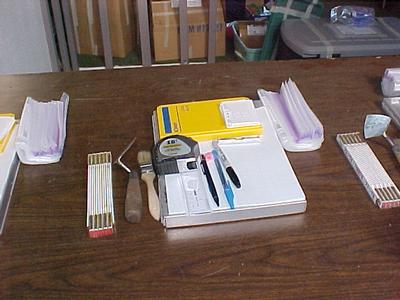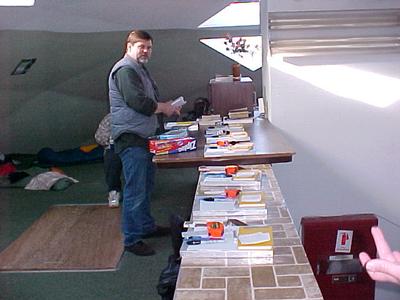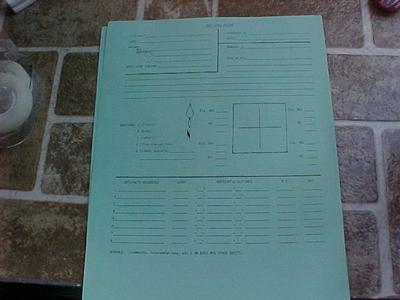
|
|
27 June, 2001
Today we toured Wales. We climbed the hill viewing the village and we also
looked at the site we will be working on, starting tomorrow. Last season
the site was filled in at the end of the season. It was then covered with
a tarp to leave the exact place in which to start excavations again. We
were given our tools: a trowel, ruler, journal, graph paper, level and log
book. We will be doing standard archaeology recordings. Ever sample has to
be labeled, measured and recorded. All data will later be analyzed back at
the lab, I think in Anchorage. Another very important thing will be
Munselling the work. I learned Munsell was a person who developed this
technique. It is the measuring the soil as we dig. The deeper we go there
is different soils, such as silt, sand, clay, sod, etc.), this is then
studied. Roger informed us at some point in the excavations there would be
DNA sampling of certain materials and bone. He wants to take a sample of
whalebone to be DNA tested to determine if there was contamination in
prehistoric times and compare it to today's contamination of whales. It
may or may not be, but it will be very exciting to do this. It has never
been done before. He also will be taking some soil and wood samples.
Team Members: We have a team of seven, soon to be six. Margie will be
leaving us next week to travel to Scandinavia and then on to an
archaeological dig in Russia.
I am learning that there are many fields of study in Anthropology.
Everyone on this team has or will be working on a variety of subjects in
their field. Throughout this experience, I hope to share with you the
dissertations and thesis's of my team.
John Dennis is from Thibodaux, Louisiana and is working towards his
Masters Degree in Anthropology at the University of Arkansas. He is a
physical anthropologist. His thesis topic is Molar Wear of Costa Rican
Monkeys. He is collecting data and looking at the diet of the monkeys to
see just how the teeth do wear down. He is also studying the to try and
determine the wear pattern according to age, diet and the leaves they eat.
There is dental wear over time: Is there a pattern? What is the pattern to
it? How do they change from infant to adulthood? The monkeys from Costa
Rica are foliviorous (leaf eaters).
His raw data (information collected) are the impressions of the teeth over
time. They make a dental plate impression to study the monkey. John stated
that when testing is done in this manner, the animal is tranquilized and
never harmed in any way. This study will determine the wear of the teeth
on the monkeys. This study is being done with a GIS (Geographical
Information System) application. John explained this is like a mountain
range. The mountains wear down over time. It is the same concept with his
topic on the monkeys of Costa Rica. He is creating what is called the GIS,
setting up all of the data and analyzing the data. John has studied with
Dr. Peter Ungar, from the University of Arkansas. He is a member of Dr.
Harritt's team this summer receiving Arctic archaeology experience.
Now on to the weather, it is really nice out today. I was told if it is
very clear across the Bering Sea, we will be able to see Siberia. There
are Little Diomede and Big Diomede and then the coast of Siberia. I have
also been told we will be having more cold, windy, rainy, very cold days
here, in other words a typical Bering Sea Day. I think today is not
typical.
See ya, Ethan

Main St. Wales, Alaska

John (right) and Roger are at the Arc above Wales looking out over the Bering Sea.

These will be our tools for the next few weeks. The trowel being the main tool.

Dr. Roger Harritt is pictured here preparing for our first meeting, getting ready for our excavation

The paper work is very important in archaeology. We had to write up a list of our findings, where they were found, the type of soil we encountered, and anything else we may have noticed of importance on every unit we excavated. We also had to draw on graph paper the units we worked on.
Contact the TEA in the field at
.
If you cannot connect through your browser, copy the
TEA's e-mail address in the "To:" line of
your favorite e-mail package.
|
